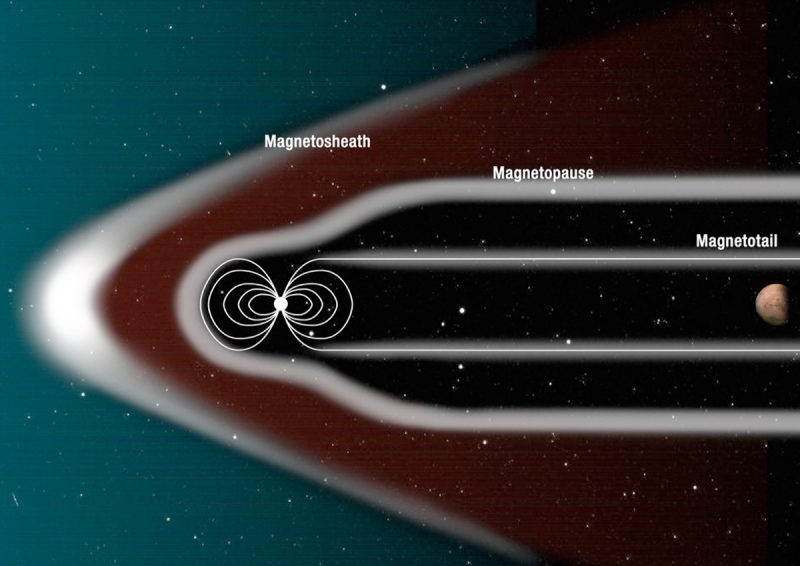- NASA and SpaceX want to send people to Mars.
- However, radiation in deep space and on the surface of the red planet poses a major threat.
- Solving the threats posed by radiation will be essential to visiting Mars, let alone colonizing the planet.
- Here’s how a trip to Mars compares to dental X-rays, radiation-worker exposure limits, and more.
Space may look like a vast and empty void.
But the cosmos teems with invisible, high-energy radiation – particles traveling near light-speed that can pummel human travelers and the surfaces of worlds like tiny bullets.
Addressing the threats posed by space radiation is growing all the more necessary: Elon Musk is dedicating thousands of SpaceX employees and multiple facilities to the task of colonizing Mars with 1 million people, while NASA pushes to set up an outpost at the red planet.
NASA recently signed on to test a new polymer-based radiation-blocking vest for astronauts, called AstroRad, on its next mission around the moon.
Musk, meanwhile, has said his new Big Falcon Rocket will use water to block radiation, though only during emergencies.
"Ambient radiation damage is not significant for our transit times," Musk said during an Oct. 2017 chat on Reddit. "Just need a solar storm shelter, which is a small part of the ship."
But just how bad is the problem of radiation in space?
The graphic below - created using data provided by NASA, the EPA, FDA, NRC, scientific journals, and other sources - compares various exposure levels in scenarios both familiar and far-flung.
Hover over a category box to see how it compares.
Musk has "aspirational" hopes to launch a round-trip mission to the red planet with humans in 2024, but the trip could total a year, and astronauts may spend about 500 days on Mars' surface.
The whole journey would expose astronauts to about 1,000 millisieverts - depending on how many solar storms belch high-energy particles toward Mars, and whether the first entity to reach the planet actually lands on it.
This means the first Martian explorers could get roughly eight times the amount of radiation per year of a radiation worker's annual exposure limit. In total, the space travelers would get about one-third of the way toward hitting a NASA astronaut's maximum lifetime exposure limit (2,500-3,250 mSv).
Where the radiation comes from - and why cancer isn't the only danger

Two main types of radiation in space are extremely harmful to humans: protons spewed out by the sun and cosmic rays. These high-energy particles and the secondary radiation they create penetrate deep into cells, promoting chronic and sometimes deadly diseases such as cancer.
Earth's magnetic field and atmosphere protect us by deflecting and absorbing most of this energy.
"The background radiation rates on the ground are 100 times to 1,000 times smaller than they would be above the atmosphere in free space," Edward Semones, a radiation health officer at NASA's Johnson Space Center, previously told Business Insider.
Cancer is a major risk of radiation exposure, but there are more immediate and surprising symptoms. Deep-space radiation might promote cataracts and impair eyesight. Even high-flying commercial-airline workers face that risk because of the thinner atmosphere.
Animal-based experiments also suggest radiation could damage the nervous system, including the brain, which might impair astronauts' focus and memory.
"You're somehow losing cognitive ability," Semones said, adding that, over the years, this "may impact conducting the mission."
Doing battle with deep-space radiation

NASA's potential use of AstroRad vests and Musk's solar-storm shelter would just be a starting point for Mars adventurers and colonists.
The more thick and heavy shielding there is between a person and the vacuum, the better. Semones said about 20 centimeters of water can soak up most space radiation. Yet water is dense and expensive to launch from Earth into space.
One solution is for Mars colonization missions to use Phobos, the planet's largest moon, as a pit stop since it likely harbors water ice just below its ruddy surface. Probes drilled into Phobos could heat and melt the ice, pump the water into elastic cells that surround a spacecraft, and shield a crew from radiation.
More radical solutions for radiation have also been proposed. Christopher Mason, a geneticist and biomedical researcher, suggests creating transgenic humans as part of a 10-phase, "500-year plan" to colonize space. His concept is to use a technology like CRISPR to edit a space flier's genome to constantly repair, as Mason put it, "do not disturb" regions that lead to cancers and other problems.
"You can't dismiss it as an idea, but right now but we don't know the mechanisms," Semones said of that far-fetched plan. (About 1,000 genes are estimated to be involved in cancer alone.)

Ultimately, colonists may try to terraform Mars - a deliberate and unprecedented act of climate change.
Frozen carbon dioxide at the Martian poles could be turned into greenhouse gases in order to create a radiation-absorbing atmosphere that would insulate the surface. Plants could then convert the thin air into oxygen and, over hundreds of years, temperatures may warm enough to melt hidden water and make it again flow on Mars' surface. One day, that could even permit spacesuit-free excursions.
Jim Green, the former head of NASA's planetary science division, has proposed building an artificial magnetic shield for Mars to protect a hypothetical nascent atmosphere from the sun's proton radiation, which might otherwise blow the air into space.
"This may sound 'fanciful' but new research is starting to emerge revealing that a miniature magnetosphere can be used to protect humans and spacecraft," Green and other researchers wrote in a brief study of the concept in 2017. "If this can be achieved in a lifetime, the colonization of Mars would not be far away."
Read more about the challenges of colonizing Mars: "Life in a bubble: How we can fight hunger, loneliness, and radiation on Mars."
